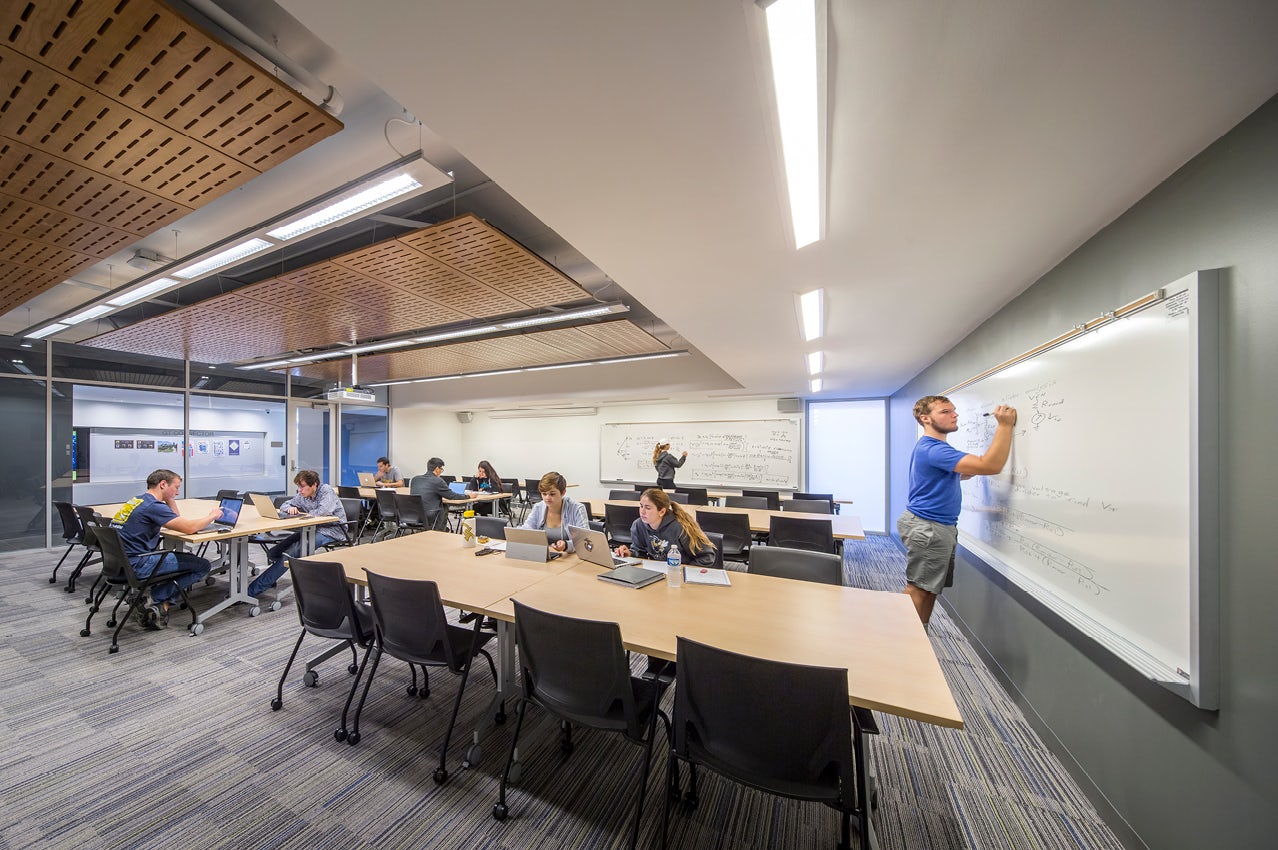At VMDO we strive to create spaces and buildings that support and enhance student learning in all of its diverse forms. The academic spaces we design are carefully tuned to provide the maximum amount of flexibility for a wide range of academic uses, and each is tailored to meet the unique demands of its users. We see collaboration as an important ingredient in today’s learning landscape and strive to make rooms and buildings that promote dialog and the healthy exchange of ideas. We believe technology is an important tool in the modern day teaching arsenal, but seek to incorporate it in seamless ways that do not detract from the learning experience. And finally, we feel strongly that each learning space must be functional for the full spectrum of students that might use it.
Focus On Collaborative Learning
Increasingly, the modern classroom is comprised of teams of students working together on projects that cross traditional academic boundaries. The success of these new learning communities relies on collaboration between groups of students and the fluid interaction amongst these groups and their instructors.
Collaboration takes many forms. Groups working together towards common ends may benefit from a range of working-group scales, from upwards of ten individuals to as few as two or three, depending on particular project goals and the aims of the instructor. Because of this wide range of possible team sizes, spaces purpose-built for active learning must take into consideration a wide range of seating and teaching permutations. The ability for groups to organize in different configurations necessitates a degree of flexibility both in fixed infrastructure as well as mobile furnishings and interactive surfaces. Our planning work establishes a range of staging options for each room and guards against obsolescence by anticipating future developments in the ways active learning techniques are deployed.
Technology
The presence of technology in today's classroom is a given. However, technically sophisticated equipment and software can become a barrier for users trying to access a learning space’s suite of digital tools. Careful integration of systems, and regular trainings, are keys to the successful implementation of digital teaching and learning strategies.
Increasingly, students are relying on laptops and mobile devices for access to course content and – occasionally – real-time class participation. More often than not, these devices are also used to fulfill the required projects assigned by instructors. This means that each participant in an active learning classroom has his/her own means of accessing data, often placing equal demand on physical and digital infrastructures. Power outlets, ample wireless service, and ways of sharing digital information seamlessly between students and instructors are critical components of an active learning classroom. Additionally, because tables and chairs are mobile and constantly being reconfigured to suit pedagogical demands, projection surfaces need to be equally flexible. Mobile screens that can be positioned alongside groups of students or multiple fixed screens that can be viewed from various locations within the room are common in active learning spaces.
Functionality
Users expect fully accessible facilities for all levels of physical ability. Good design can send a clear message that equality is a priority on campus.
To accommodate all participants comfortably, and to ensure the safety and welfare of those using educational facilities, the design of active learning spaces requires consideration of a wide range of physical parameters. As noted, students often bring their own equipment with them, and each item must be accounted for in the selection and layout of furniture. Careful planning ensures that each proposed use of the space can be hosted without putting stress on the room or disquieting users.

